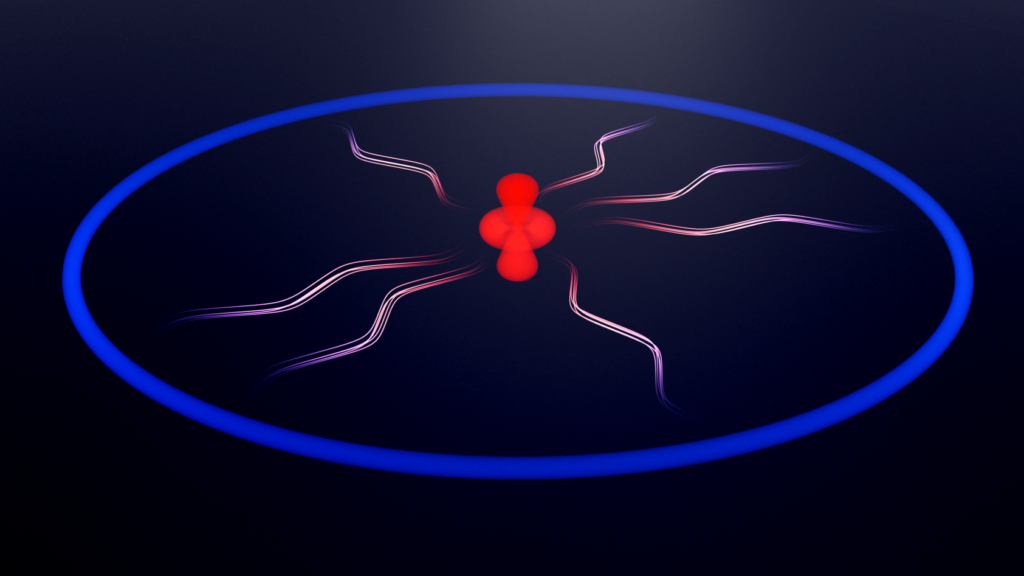In the CiRQus project, we have implemented laser-controlled interactions between a highly-excited circular Rydberg qubit and a second ionic core electron. This achievement advances control of circular Rydberg atoms from the microwave to the optical domain by combining established tools for manipulating trapped ions with neutral atom arrays.
Circular Rydberg states offer orders-of-magnitude longer lifetime compared to commonly used low-angular momentum states for neutral atom quantum simulation and computing, and allow for surpassing fundamental coherence limits of the Rydberg platform by orders of magnitude. Qubits encoded in circular states, however, are controlled via globally applied microwave radiation instead of focused laser light, which makes local control on the single particle level challenging. Atoms with two valence electrons, however, provide an intriguing solution to this problem. While one of the electrons serve as a qubit prepared in circular Rydberg orbits, the second electron can still be coherently controlled with lasers. In our experiments, we use Strontium atoms, for which the second inner-shell electron essentially behaves like that of a Strontium ion.

What remains to be established, is a link between the two electrons via some type of long-range interaction. Inspired by previous works in atomic beam experiments, we have now established this link for individual circular Rydberg qubits in tweezer arrays. The electrons talk to each other via electrostatic interactions, specifically, via a quadrupole coupling when the inner-shell electron is shelved into a metastable D-level of the ionic core. We have measured this optically switchable interaction through kilohertz-scale frequency shifts on our circular Rydberg qubit.
Accessing such energy scales, in fact, requires the long lifetimes provided by circular Rydberg atoms, and opens intriguing perspectives for narrow-linewidth spectroscopy inside a Rydberg atom. A next step is to exploit the established core ion control for local optical manipulation, laser cooling, and direct optical imaging of the alkaline-earth metal circular Rydberg qubits.